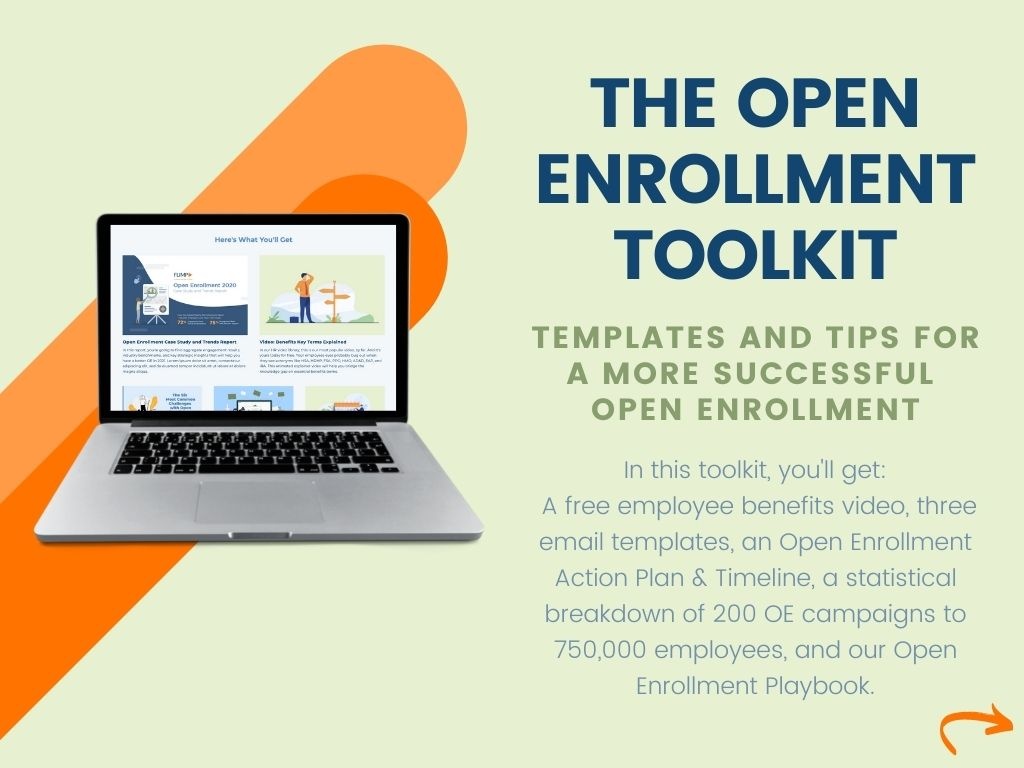How many times has an employee asked you a question during open enrollment that you already answered via email? Probably too many to count.
The truth is, if they’re read at all, most email messages are merely skimmed over, even when they deal with critical topics, such as benefit options and enrollment deadlines.
It’s frustrating, but don’t blame your company’s employees. The typical white-collar worker receives upwards of 100 emails every day.
Just think about your own overcrowded inbox. Do you honestly have the time (or the energy) to read every message word for word? Of course not; to optimize your efficiency, you must make quick judgment calls based on each email’s appearance, length, subject line, and other factors.
Fortunately, a few simple strategies can help more of your open enrollment emails make it through this initial round of culling — and significantly reduce the time you spend answering the same questions.
Here are five ways to up your HR team’s email game for open enrollment season:
1. Send More Than One Email
Repetition wins.
We’re not saying you should bombard employees with daily reminders to enroll in benefits. That would get pretty annoying pretty fast. But a single mega-email sent at the beginning of the open enrollment period faces a high risk of being overlooked.
A multi-email strategy will give you more opportunities to connect with employees.
A reasonable cadence would include at least three emails:
- An email sent two weeks before open enrollment. The focus should be on creating awareness of benefits (especially new ones) and introducing deadlines.
- An email sent at the start of open enrollment. The emphasis should be on the enrollment process and the consequences of missing deadlines.
- A “time’s running out” email sent one day before the deadline.
(No need to start from scratch. Get these as open enrollment email templates here. Feel free to copy and paste as much as you need.)
2. Start Early (Ideally, Year-Round)
The single biggest mistake benefits managers make is to confine their benefits messaging to the open enrollment period. It’s no wonder 67% of employees say reading about their benefits options is complicated, intimidating, or stressful. They often have to do all their benefits research at once — like cramming the night before a big final.
A year-round communications strategy keeps benefits top-of-mind for employees (which tends to boost utilization) and allows them to digest benefits information at a more leisurely pace.
Studies show that people learn more effectively in tiny bits over long periods. You can use this to your advantage by sending regular emails throughout the year reviewing benefits concepts, encouraging usage, and promoting resources such as your benefits microsite.
(Our year-round benefits communication calendar offers a relevant messaging theme for each month.)
3. Keep Your Emails Short
There’s so much employees need to know to make informed benefits decisions, from the value of choosing an HDHP over a traditional plan to the difference between an HMO and PPO. An open enrollment email can easily stretch into the thousands of words.
But resist the temptation to burden your employees with long expanses of unbroken text. Most emails these days are read on cramped mobile screens. Studies of email length find that the typical reader checks out around 200 words.
This may not seem like a lot, but you can maximize your limited verbal real estate with punchy sentences and bulleted lists. Link to online resources for recipients who want to go deeper on particular topics.
(Tip: Shorten your email subject lines, as well. Subjects of about seven words or less see higher engagement rates.)
4. Integrate Visual Elements
You probably won’t be surprised to learn that text is not everyone’s favorite way to receive information.
Nearly half of employees (48%) say video is the most engaging form of communication, while 37% prefer other visual content forms; 67% of employees complete tasks better when visual instructions are included.
Video and other visual elements — such as charts and illustrations — can make your open enrollment emails come to life. Digital postcards, an eye-catching messaging form that often includes video, consistently see engagement rates above 70%.
(Click here to explore the anatomy of an effective digital postcard and view six full-size examples.)
5. Think Beyond the Email
If you’ve tried everything in this article and your open enrollment emails still aren’t getting the attention you need, it might be time to try experimenting with other communication methods.
Text messages, for example, are opened 98% of the time, compared to 20% for emails. When you think about the reason why, it makes sense. People hate email (sorry) but love their phones and keep them within arms’ reach at all times.
Sending a mass text is easy, provided you follow all the relevant regulations. With Flimp’s WorkforceTXT tool, you can get your first employee text message out within 48 hours.
Ultimately, communicating effectively with employees before and during open enrollment requires a multi-platform strategy: email, text messages, microsite resource centers, video explainers, and, yes, good old-fashioned one-on-one meetings.
Formulate your open enrollment communications strategy using your Open Enrollment Toolkit from Flimp. This free toolkit is filled with valuable, actionable resources designed to help HR teams reach their open enrollment goals, including:
- Email templates
- A detailed action plan and calendar
- A data analysis drawn from 200 open enrollment campaigns
- A playbook offering solutions to the six most common open enrollment challenges

